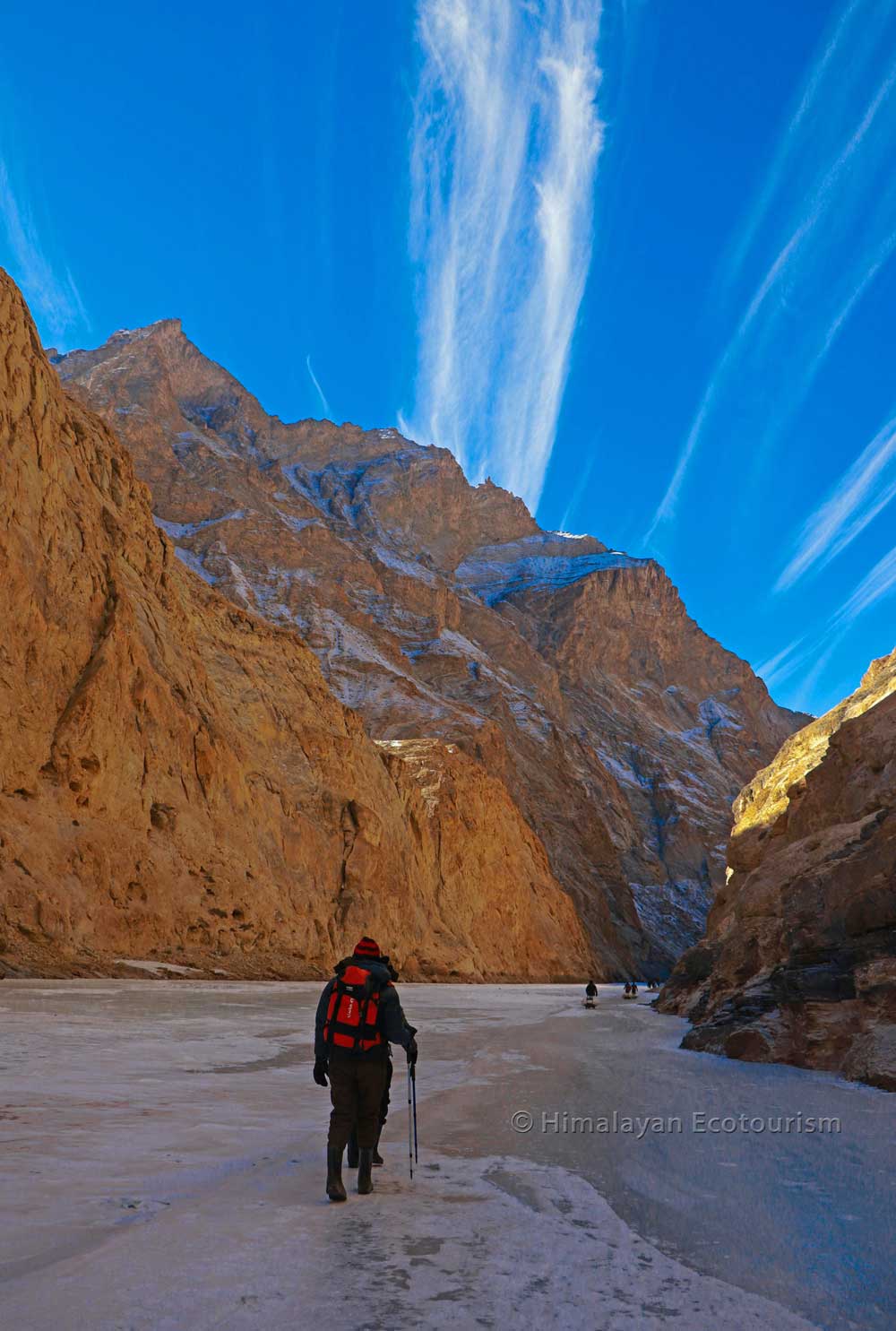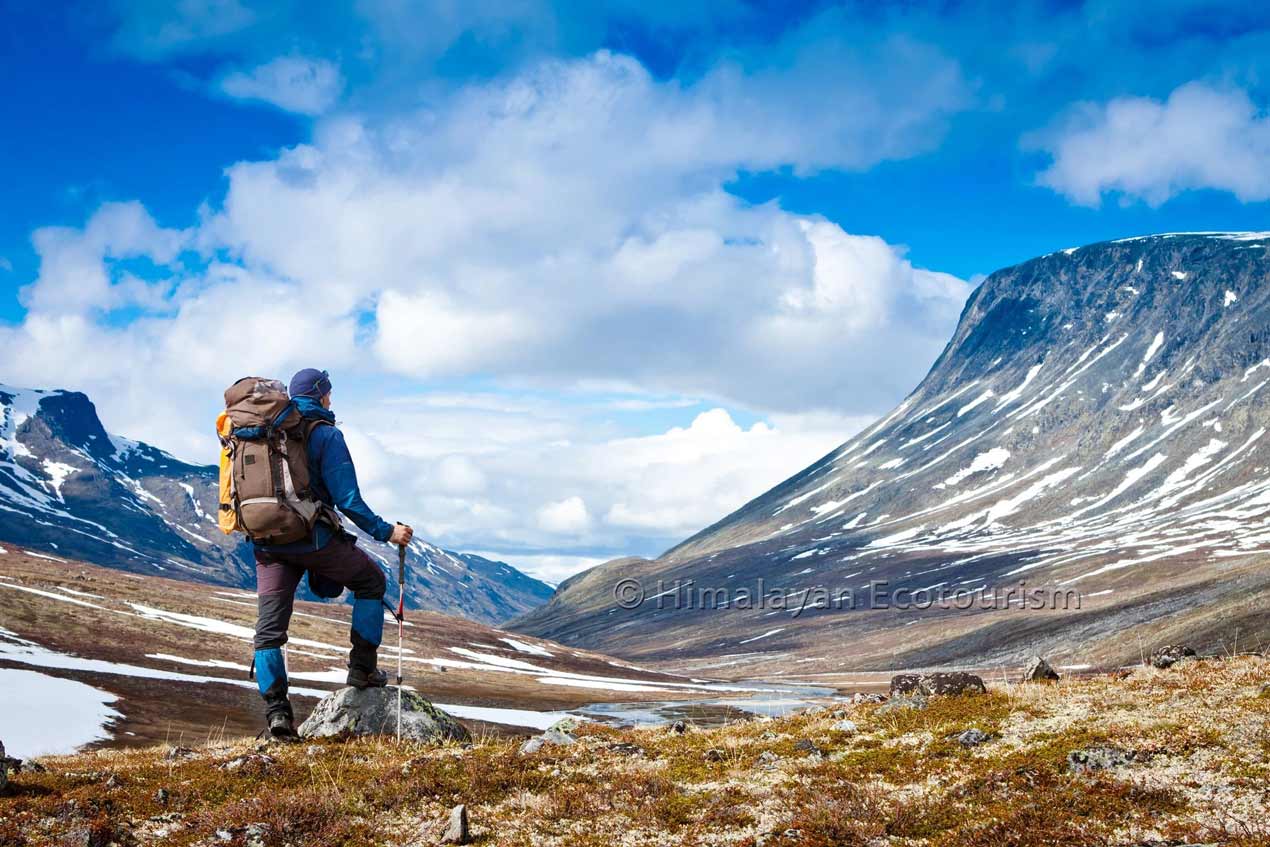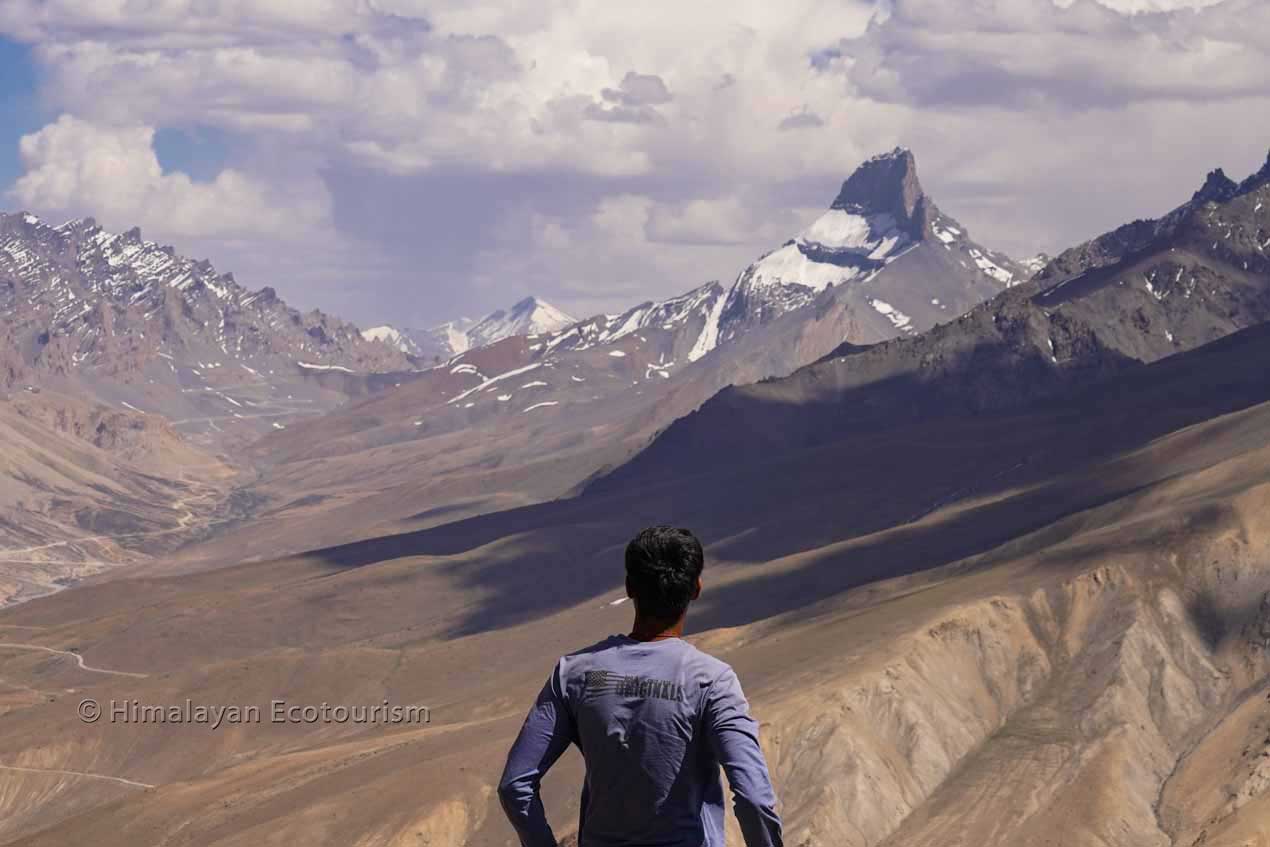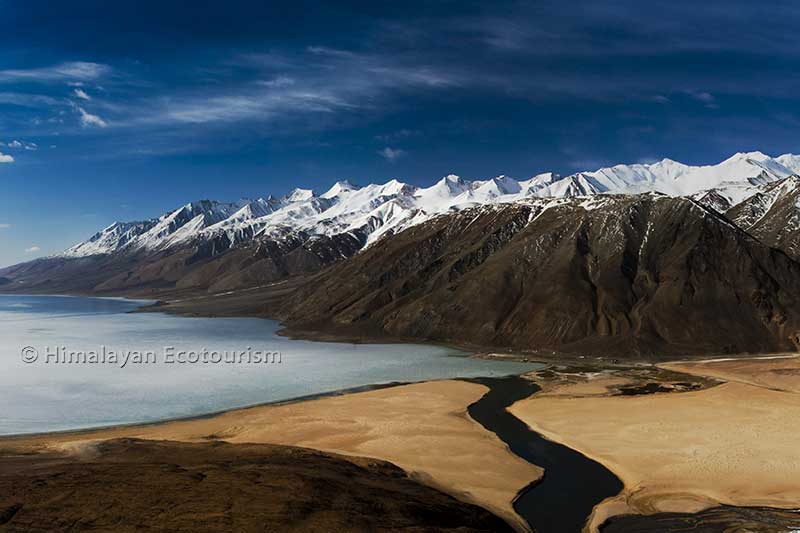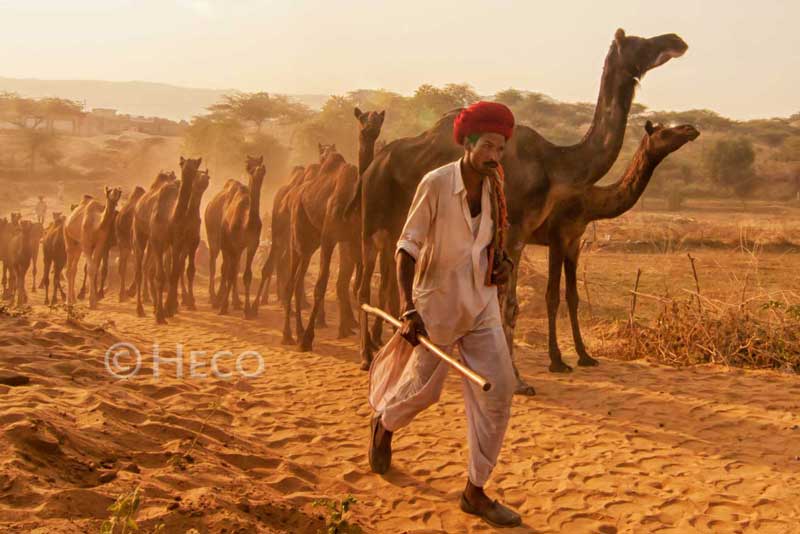Trekking in Ladakh – A Complete Guide

What you need to know before trekking with us in Ladakh
Ladakh, known as the “Little Tibet of India” is a dream destination for trekkers seeking adventure in the heart of the Himalayas. With its breathtaking landscapes, rugged mountain trails, and rich cultural heritage, trekking in Ladakh offers an unparalleled experience for both beginners and seasoned trekkers. From the famous Markha Valley trek to the remote and challenging Rumtse to Tso Moriri route, the region is home to some of the most spectacular trails in India.
The high-altitude terrain of Ladakh presents both challenges and rewards. As you traverse dramatic mountain passes, cross glacial rivers, and camp under a sky filled with countless stars, you’ll be immersed in an environment unlike any other.
Whether you’re trekking through barren landscapes with towering cliffs or exploring hidden villages with centuries-old monasteries, every step in Ladakh tells a story of resilience and beauty.
But before embarking on a trek in this incredible region, take a moment to explore this page to better understand how trekking in Ladakh has evolved.
Latest updates for your trek in Ladakh in 2025
We are here for your safety
Ladakh snow conditions 2025
- The winter of 2024-2025 began with unusually warm temperatures and low snowfall. However, Ladakh experienced heavy snowfall in March 2025, likely causing a slight delay of one to two weeks in the opening of high-altitude treks (above 4000 m).
River crossing on Ladakh treks
- As the winter 2024-2025 has experienced snowfalls above average, the river crossing during early trekking season in Ladakh (June-July) might be a little tougher than usual.
Opening of the passes from Manali to Leh
- The Manali to Leh highway is likely to be opened in the first half of May 2025.
Important weather forecast/information
- Important sowfalls were observed over Ladakh on the 11 and 12 of April 2025.
Ladakh road conditions 2025
- Road conditions update likely to be available from mid-May 2025.
- The road between Chilling and Padum is currently open to traffic only twice a week — on Wednesdays and Sundays. On all other days, the route remains closed due to ongoing construction work. Travelers are advised to plan their journeys accordingly.
Permits to Trek in Ladakh
Ladakh, located at the Indian border with China and Pakistan, is a region of geopolitical significance. Due to its strategic location, some parts of Ladakh are restricted, requiring special permission for visitors, especially foreigners.
Most trekking routes in Ladakh and Zanskar do not require special permits. However, the restricted areas such as Tso Moriri, Pangong Tso, and Nubra Valley require permits for foreigners.
Foreigners entering these restricted areas need an Inner Line Permit (ILP), which we can arrange for you in Leh for a fee of around 700 INR per person. These permits are valid for two weeks, ensuring you have sufficient time to explore Ladakh’s remote and breathtaking landscapes.
Additionally, for high-altitude peak expeditions like Kang Yatse, obtaining a permit is compulsory. Any peak above 6,000 meters mandates a permit, regardless of nationality. Please enquire with us to know about the updated rules and fees for expeditions.
Best Season to Trek in Ladakh
The ideal trekking season in Ladakh runs from June to September. However, the exact timing depends on the elevation and terrain:
- Higher elevation treks open later in the season due to prolonged snow cover.
- Treks with river crossings are safer later in the summer, as melting snow increases river flow earlier in the season. If river crossings are expected, it is advisable to trek early in the morning when water levels are lower.
- Winter Treks: The Chadar Trek (on the frozen Zanskar River) and the Snow Leopard Expedition are conducted exclusively during the winter months (January to February).
Among these months, September offers one of the best trekking experiences. By mid-September, the monsoon withdraws from the Himalayas, leaving behind a crystal-clear blue sky and excellent trekking conditions. However, as temperatures begin to drop at higher altitudes, extra precautions are necessary for cold weather.
June is another favorable month as it remains outside the monsoon season. However, only lower-altitude treks are accessible early in the season, as snow may still block higher-altitude trails.
Packing List for Trekking in Ladakh
Trekking in Ladakh requires general trekking essentials, but with some unique considerations:
- Layered Clothing : Ladakh experiences extreme temperature variations. Days can be warm, while nights can be freezing, so packing layers is essential.
- Waterproof Windcheater : Although Ladakh is a high-altitude desert, occasional showers occur during July and August. A lightweight rain jacket is recommended.
- Footwear : Bring sturdy, comfortable hiking boots for rough terrain and a pair of Crocs or sandals for river crossings.
- Binoculars : Ideal for spotting Ladakh’s rare wildlife, including Snow Leopards, Lynx, and Blue Sheep.
- Sleeping Bag Liner : While we provide quality camping equipment, having your own liner adds extra warmth and hygiene.
- Hat and Sunscreen : The high-altitude sun is intense, making UV protection crucial to avoid sunburn.
- Walking Poles : Highly recommended to reduce strain on your knees, especially during steep descents.
Choosing the Right Rucksack :
- If your trek involves staying in homestays, a 40-liter backpack is sufficient.
- If your trek involves camping, you’ll need a 60-liter rucksack to carry extra gear for overnight stays.
Photography Equipment :
A good smartphone is great for daylight landscapes, but for wildlife photography, zoomed-in shots, or capturing the Milky Way, a DSLR or mirrorless camera with a tripod is highly recommended.
A Thoughtful Gesture for Homestays :
Ladakhi families hosting trekkers are warm and hospitable. Bringing a small treat from your home country – such as chocolates or sweets – is a beautiful way to share cultures and bring joy to your hosts !
How to Prepare for High-Altitude Trekking in Ladakh
Trekking in Ladakh means venturing into high-altitude terrain, where oxygen levels are lower, and the risk of Acute Mountain Sickness (AMS) increases. Proper acclimatization and physical preparation are essential to ensure a safe and enjoyable trek.
1. Before Reaching Ladakh : Fitness Preparation
To prepare your body for trekking at high altitudes, start physical training at least one month in advance:
- Engage in cardiovascular exercises such as running, hiking, or cycling to build stamina.
- Include leg-strengthening exercises like squats and lunges to support long walks on uneven terrain.
- Practice deep breathing techniques to improve oxygen efficiency.
2. Upon Arrival : Acclimatization in Leh
Once you reach Ladakh, allow at least two days in Leh or a similar altitude (3,500m) before starting your trek. This helps your body adjust gradually to the lower oxygen levels.
- Avoid overexertion and take short, easy walks.
- Leh has access to medical facilities in case of any acclimatization concerns.
- Avoid alcohol and caffeine, as they can dehydrate you and worsen AMS symptoms.
3. During the Trek : Gradual Ascent
Our trekking itineraries are designed to increase altitude gradually, allowing your body time to adjust.
- The “climb high, sleep low” strategy helps reduce AMS risk.
- If you feel mild symptoms like headaches or dizziness, take rest breaks and descend slightly if needed.
4. Throughout Your Stay : Hydration & Preventive Measures
Staying hydrated is one of the most effective ways to prevent AMS.
- Drink at least 3-4 liters of water per day.
- Eat nutritious, high-energy meals to maintain strength.
Additional Support: Oxygen & Medication
- For treks involving higher altitudes or shorter acclimatization periods, we carry an oxygen canister to provide quick relief if needed.
- If you have previously experienced altitude sickness, or as a preventive measure, consult your doctor about taking Diamox (Acetazolamide)—a safe and commonly used medication for AMS prevention.
Please inform us about any health conditions before your trip so that we can take appropriate preventive measures and ensure your safety.
Can I Trek Without a Guide in Ladakh?
While some treks in Ladakh can be done independently, hiring a local guide is strongly recommended. Our expert guides provide:
- Cultural insights into Ladakhi traditions and Buddhist heritage.
- Wildlife identification, helping you spot unique Himalayan species.
- Safety & Logistics, including navigation, permits, and emergency support.
Most treks require a support team, including a guide, assistants, and occasionally donkeys or mules for carrying camping equipment.
Best Treks in Ladakh for Beginners and Experts
Ladakh offers a variety of treks catering to different experience levels:
Beginner Treks in Ladakh
- Sham Valley Trek : A short and easy trek through charming villages and monasteries.
- Markha Valley Trek : One of the most popular treks, offering beautiful landscapes and moderate difficulty.
Intermediate Treks in Ladakh
- Lamayuru to Chilling : A scenic route combining monastery visits with remote landscapes.
- Tso Marpo Trek : A unique, less-crowded trek offering pristine Himalayan views. Tso Marpo is an exclusive trek by Heco !
- Nubra Valley Trek : A journey through desert landscapes, high-altitude passes, and cultural villages.
Expert Treks in Ladakh
- Rumtse to Tso Moriri Trek : A challenging, high-altitude trek leading to the stunning Tso Moriri Lake.
- Kang Yatse Expedition : A strenuous climb to a 6,400m peak, requiring mountaineering experience.
Responsible Trekking in Ladakh : Culture & Environment
At Himalayan Ecotourism, we emphasize responsible travel:
- Respect local culture: Ladakh is deeply spiritual; dress modestly and follow local customs.
- Eco-friendly trekking: No plastic waste, leave-no-trace principles.
- Support local communities: Our treks involve local homestays, guides, and eco-friendly camping.
How we organize your trek in Ladakh ?
With Himalayan Ecotourism, you get:
- Customized itineraries tailored to your fitness level and interests.
- Small group sizes for a personalized experience.
- Sustainable practices that respect Ladakh’s fragile environment.
Expert guidance from local Ladakhi guides and experienced trekking professionals.
Some of our destinations
The Great Himalayan National Park
Meet the mighty Himalayas and explore GHNP’s wilderness on our 2- to 10-day treks.
Ladakh and Zanskar
A unique blend of Tibetan culture with the grandeur of the Himalayas
Rajasthan
Travel to the most popular destination of India with an award-winning social enterprise





